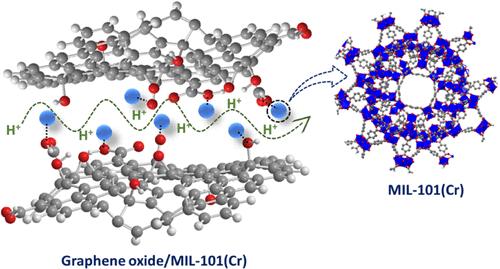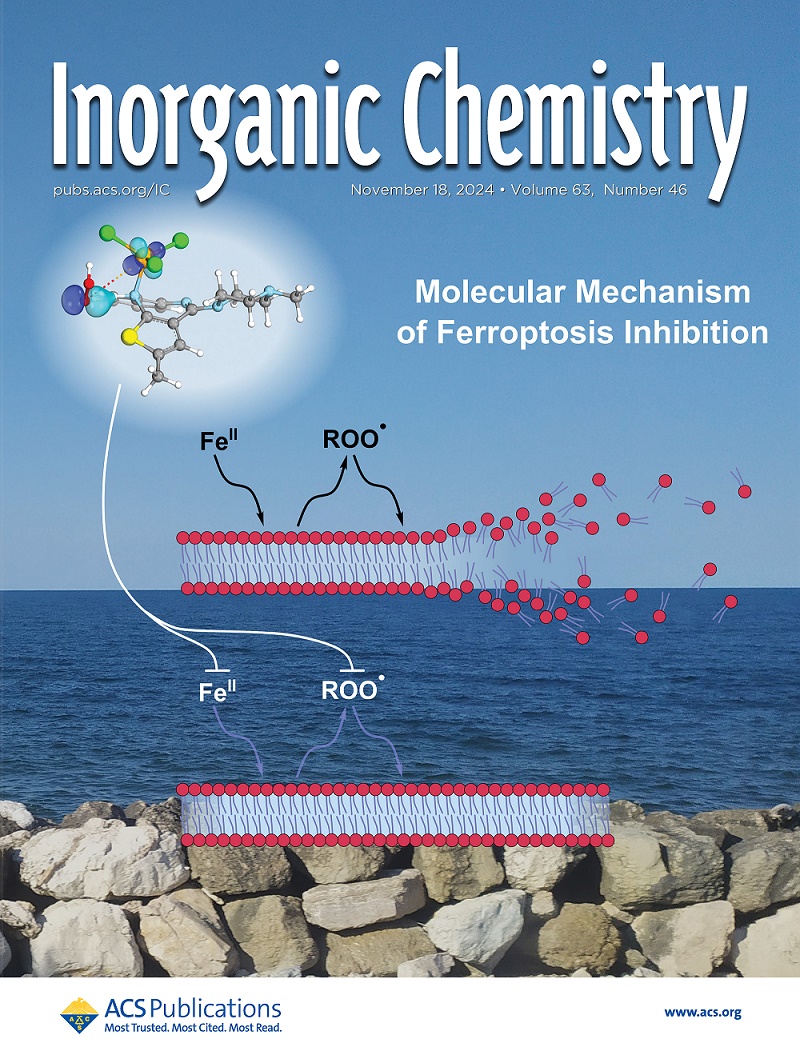通过调节氧化石墨烯含量制造 MOF-GO 复合材料以实现超质子传导性
IF 4.3
2区 化学
Q1 CHEMISTRY, INORGANIC & NUCLEAR
引用次数: 0
摘要
金属有机框架(MOFs)已成为质子传导性的关键材料,尤其是在替代能源需求日益增长的背景下。增强 MOFs 的质子传导性一直是研究的重点,其中一种有效的方法是将 MOFs 与氧化石墨烯(GO)结合形成复合材料。本研究选择了 Cr-MIL-101 MOF,并通过原位结晶使其在 GO 片上生长,从而形成了不同 GO 含量(MIL-101/GO(x%),x = 1%、2% 和 5%)的 MOF-GO 复合材料。二维-GO 层上的氧官能团(如羧基、羟基和环氧基)提高了复合材料的酸性和亲水性,从而直接改善了质子传导性。由于 GO 引入了额外的酸性官能团,本研究中制造的所有复合材料都比母体 MOF 具有更高的电导率。在不同的复合材料中,MIL-101/GO(2%) 复合材料表现出最高的质子电导率,在 80 °C 和 98% 相对湿度 (RH) 条件下达到了 0.105 S cm-1 的超质子电导率值。这些结果凸显了 MOF-GO 复合材料在质子交换膜燃料电池(PEMFC)和其他能源相关技术的质子交换膜中作为纳米填料的应用潜力。本文章由计算机程序翻译,如有差异,请以英文原文为准。

Fabricating MOF–GO Composites by Modulating Graphene Oxide Content to Achieve Superprotonic Conductivity
Metal–organic frameworks (MOFs) have emerged as crucial materials for proton conductivity, especially in the context of the growing need for alternative energy sources. Enhancing the proton conductivity of MOFs has been a major focus with one effective approach involving the integration of MOFs with graphene oxide (GO) to form composite materials. In this study, Cr-MIL-101 MOF is selected, and its growth on GO sheets has been achieved through in situ crystallization, leading to the formation of MOF–GO composites with varying GO content, MIL-101/GO(x%), (x = 1%, 2%, and 5%). The oxygen functional groups on the 2D-GO layer e.g., carboxyl, hydroxyl, and epoxy groups improve both the acidity and hydrophilicity of the composite, which directly contributes to improved proton conductivity. All the composites, fabricated in this work, exhibit higher conductivity than that of the parent MOF due to the additional acidic functional groups introduced by GO. Among the different composites, the MIL-101/GO(2%) composite exhibits the highest proton conductivity, achieving superprotonic conductivity value of 0.105 S cm–1 at 80 °C and 98% relative humidity (RH). These results highlight the potential of MOF–GO composites for their application as nanofillers in proton exchange membranes for proton exchange membrane fuel cells (PEMFCs) and other energy-related technologies.
求助全文
通过发布文献求助,成功后即可免费获取论文全文。
去求助
来源期刊

Inorganic Chemistry
化学-无机化学与核化学
CiteScore
7.60
自引率
13.00%
发文量
1960
审稿时长
1.9 months
期刊介绍:
Inorganic Chemistry publishes fundamental studies in all phases of inorganic chemistry. Coverage includes experimental and theoretical reports on quantitative studies of structure and thermodynamics, kinetics, mechanisms of inorganic reactions, bioinorganic chemistry, and relevant aspects of organometallic chemistry, solid-state phenomena, and chemical bonding theory. Emphasis is placed on the synthesis, structure, thermodynamics, reactivity, spectroscopy, and bonding properties of significant new and known compounds.
 求助内容:
求助内容: 应助结果提醒方式:
应助结果提醒方式:


